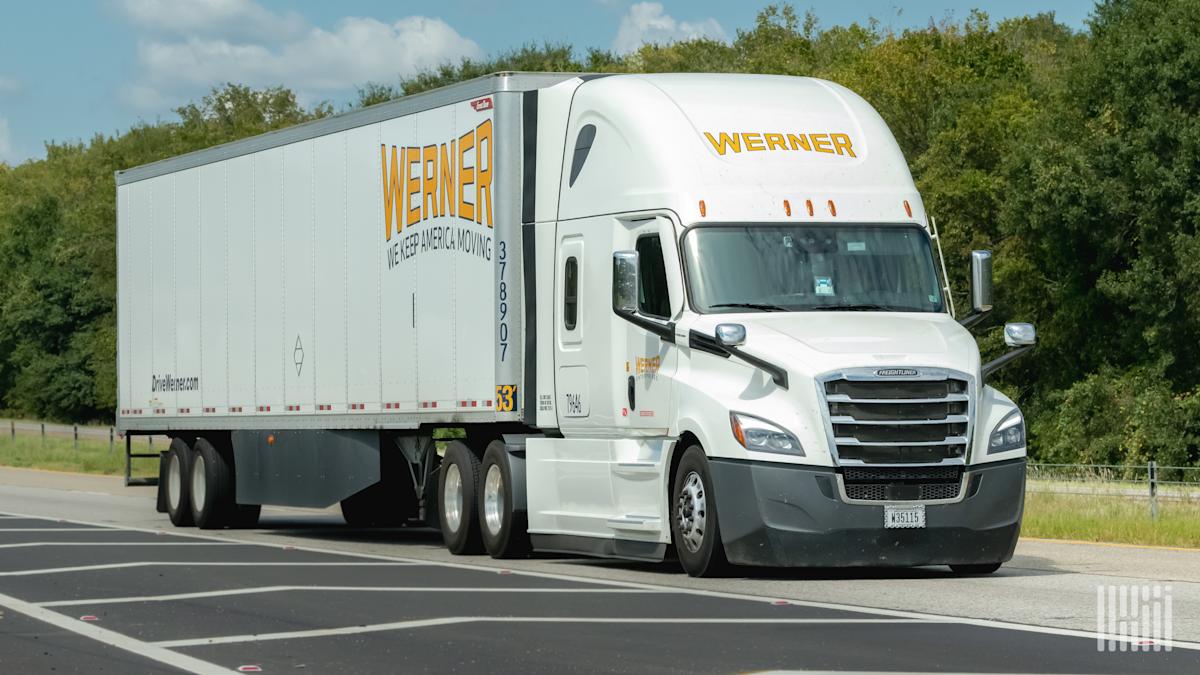Werner says ‘no retreat’ possible on dedicated fleet size
Entering this year, truckload carrier Werner Enterprises was hoping to grow its 7,500-truck fleet by as much as 5% following an extended downturn. Much of the growth was to occur in its dedicated segment, but new tariffs and other cracks in the broader economy pushed out a recovery in the freight industry. Even with the headwinds, the company said Tuesday that it has little room to further trim its dedicated fleet count.
“Our heels are on the line … there is no retreat from here on fleet size,” Derek Leathers, Werner chairman and CEO, told investors at the Baird Global Industrial Conference in Chicago.
Leathers cited base capacity needs to maintain service levels and the fixed-cost nature of the business as reasons further attrition is not an option.
Like most fleets, Werner (NASDAQ: WERN) cut tractor counts to improve utilization and lower costs during the downturn. Its active dedicated fleet of 4,865 units has been flat since the second quarter of last year, but remains 550 units, or 11%, below the 2022 peak. The company’s one-way fleet is down 25% to 2,638 units over that stretch, but some of those assets were moved to accommodate dedicated account wins.
(The company lowered its full-year truck count guidance to a range of negative-2% to flat when it reported third-quarter results last month.)
While Leathers called the current downcycle the worst he has seen in his 35 years in the industry, he’s eyeing growth, noting a “plenty robust” dedicated pipeline. He also pointed out that the company has cut costs without shying away from long-term investments like other companies have.
Werner is calling for a “normal” peak season this year, similar to last year, with “an opportunity to the upside,” based on recent conversations with major shippers. Leathers said its discount retail and more income-discretionary, big box customers are “doing pretty well right now.” He’s also encouraged with the potential for outsize tax refunds given new legislation allowing deductions on qualified tips and overtime pay.
The TL industry is also seeing very early supply-side tailwinds as regulatory enforcement ramps (non-domiciled CDL restrictions and English language proficiency enforcement) and Class 8 truck orders remain below replacement level.
(The U.S. Court of Appeals for the District of Columbia ordered a stay on Monday to the FMCSA’s interim rule, limiting non-domiciled CDL eligibility to foreign nationals.)
Some states, according to Leathers, exploited worker eligibility limitations and took advantage of a loophole allowing drivers whose home states have long CDL testing delays to take their tests in another state. He pointed to CDL issuances jumping from an average of 15,000 to 50,000 in certain states without a corresponding increase in driver school networks.



Leave a Comment
Your email address will not be published. Required fields are marked *